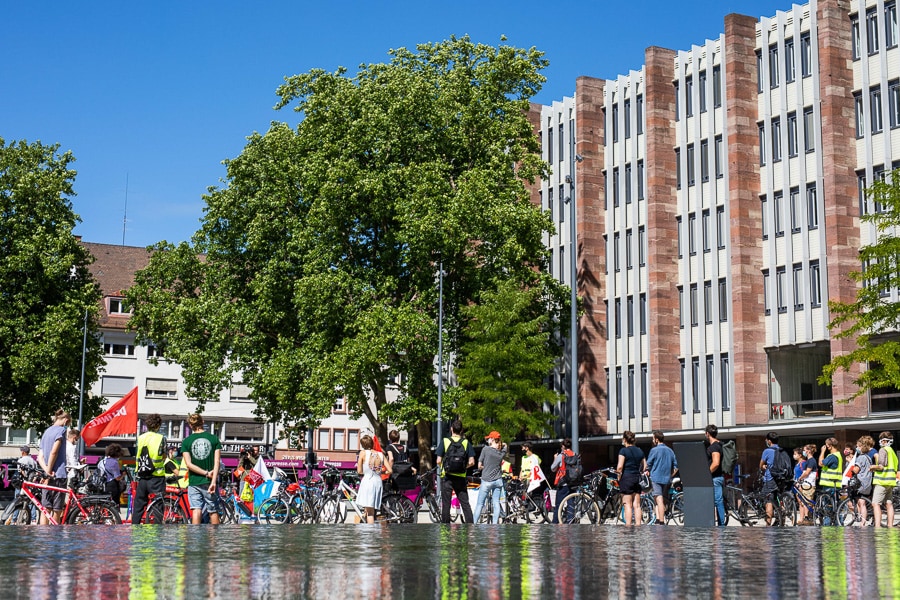
The city where cars are not welcome
Heidelberg, a city of 160,000 people on the Neckar River, which was threatening to overflow its banks recently after unusually heavy rains, provides a glimpse of how an automobile-light city of the future may look

A bicycle demonstration on the square of the Old Synagogue of the University, HeidelbergPhoto: Photo by Philipp von Ditfurth/picture alliance via Getty Images
Eckart Würzner, a mayor on a mission to make his city emission-free, is not terribly impressed by promises from General Motors, Ford and other big automakers to swear off fossil fuels.
Not that Würzner, the mayor of Heidelberg, is against electric cars. The postcard-perfect city, in southern Germany, gives residents who buy a battery-powered vehicle a bonus of up to 1,000 euros, or $1,200. They get another 1,000 euros if they install a charging station.
But electric cars are low on the list of tools that Würzner is using to try to cut Heidelberg’s impact on the climate, an effort that has given the city, home to Germany’s oldest university and an 800-year-old castle ruin, a reputation as a pioneer in environmentally conscious urban planning.
Würzner’s goal is to reduce dependence on cars, no matter where they get their juice. Heidelberg is buying a fleet of hydrogen-powered buses, building a network of bicycle “superhighways” to the suburbs and designing neighborhoods to discourage all vehicles and encourage walking. Residents who give up their cars get to ride public transportation free for a year.
“If you need a car, use car-sharing,” Würzner said in an interview at Heidelberg’s Baroque-style City Hall, which was nearly deserted because of the pandemic. “If you can’t use car-sharing because you’re living too far outside and there is no mass transportation, then use the car, but just to the train station and not to downtown.”
©2019 New York Times News Service




